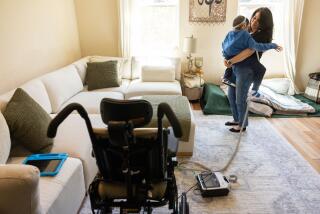Nation’s Health-Care Crisis
- Share via
It is difficult to understand how your otherwise penetrating analysis of health-care costs could have omitted a major alternative to hospitals and nursing homes--home health care.
As your article points out, many patients are being released from hospitals “sooner and sicker” than previously, due to cost-saving measures. But whatever their income or insurance coverage, they need not forgo continued care. Follow-up home care, as practiced by our area’s non-profit Visiting Nurse Assn. and Services, is available to all who need it.
What that means in economic terms is that, on average, a patient may receive two months of intermittent care at home for the cost of one day in a hospital. In social terms, it means that the elderly in particular (more than 70% of VNA home health patients are over 65) are able to remain in their own homes and out of institutions. In personal terms, VNA home care can help both patient and family relieve their anxieties and thereby speed recovery.
Of course, not all discharged hospital patients have a support system that makes recuperation at home possible for them. But for the vast majority needing follow-up care, a wide range of nursing, therapeutic, homemaking and social work services can be provided.
Last year the 12 visiting nurse organizations in Southern California made more than 750,000 home visits to 45,000 patients. In total, home health agencies in our region made about 2.225 million visits to 150,000 patients, indicating the enormous and growing dependence of patients and their physicians upon home-care providers.
Considering the positive impact this care is having on the dire problem of health care costs, it must be taken into account as a meaningful alternative.
PEGGY KEIDEL
Covina
Keidel is President of the Southern California Coalition of Visiting Nurse Assn. and Services.






